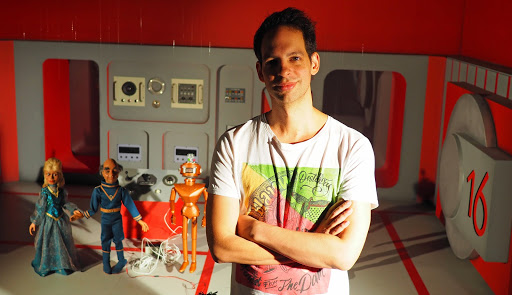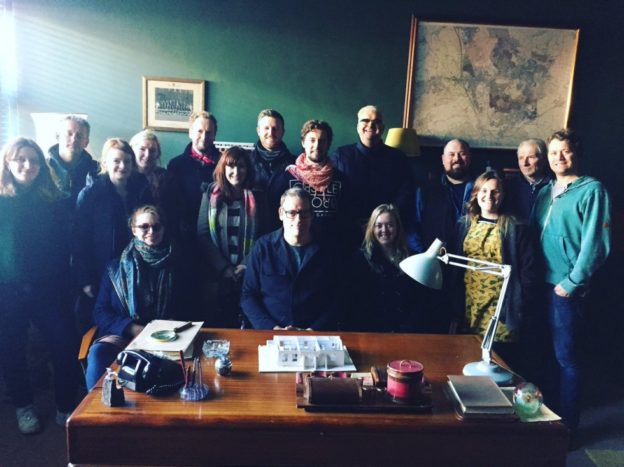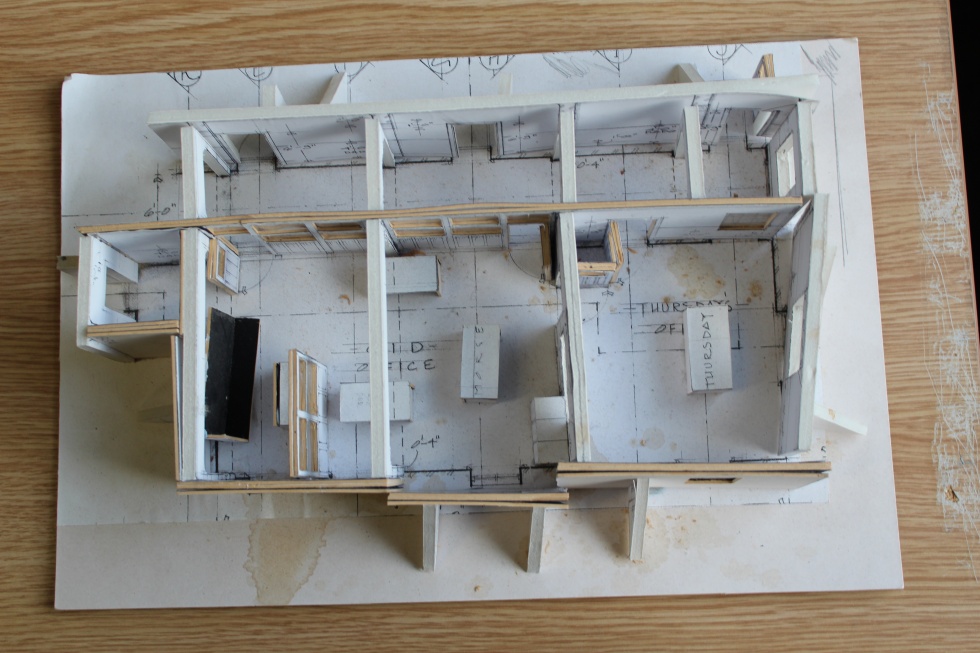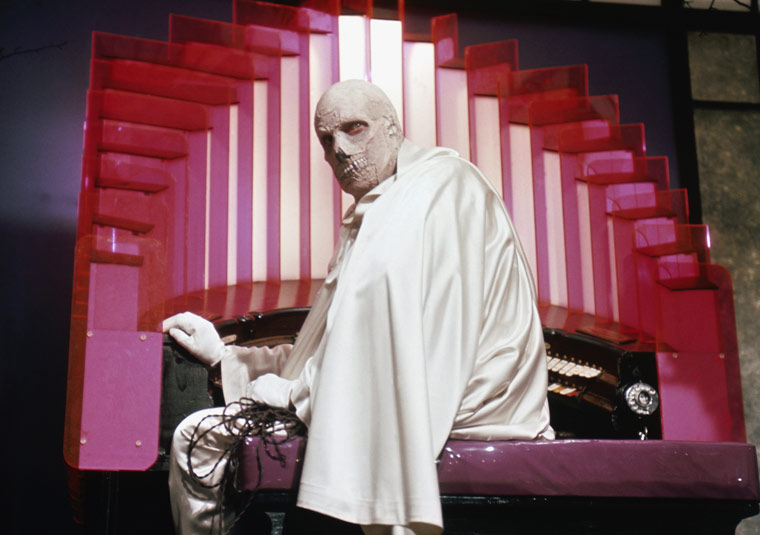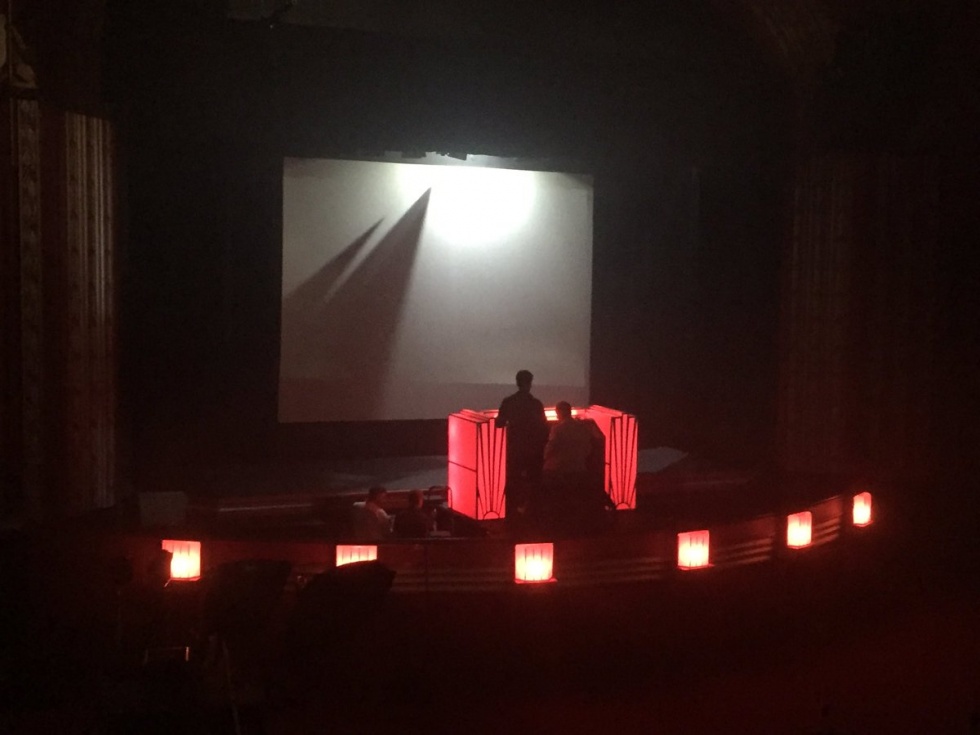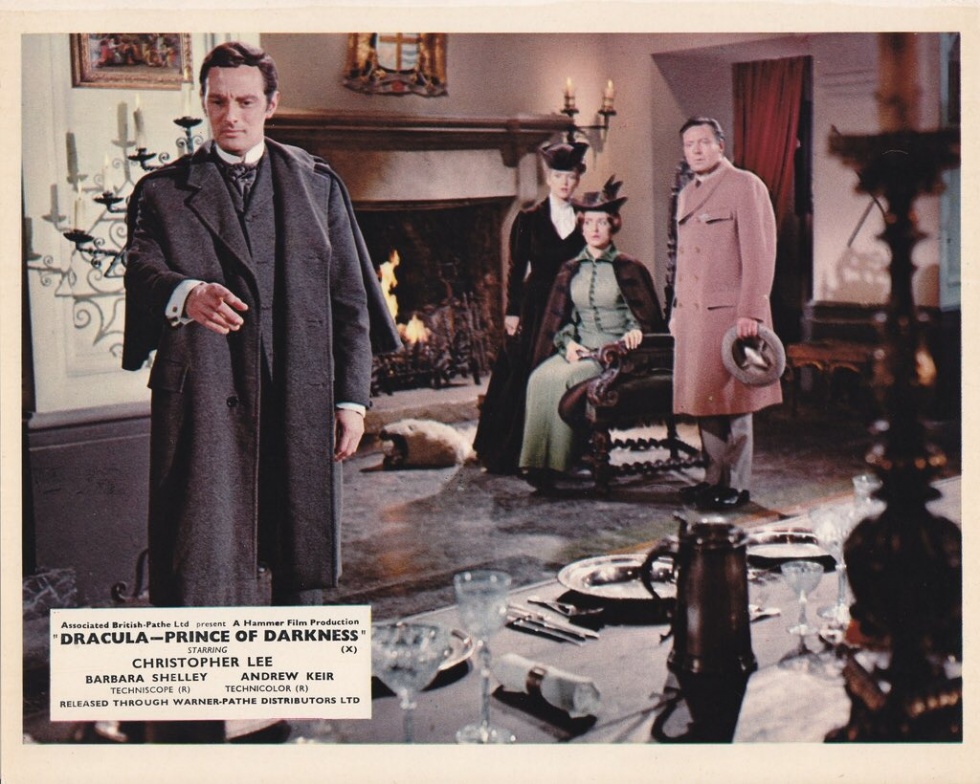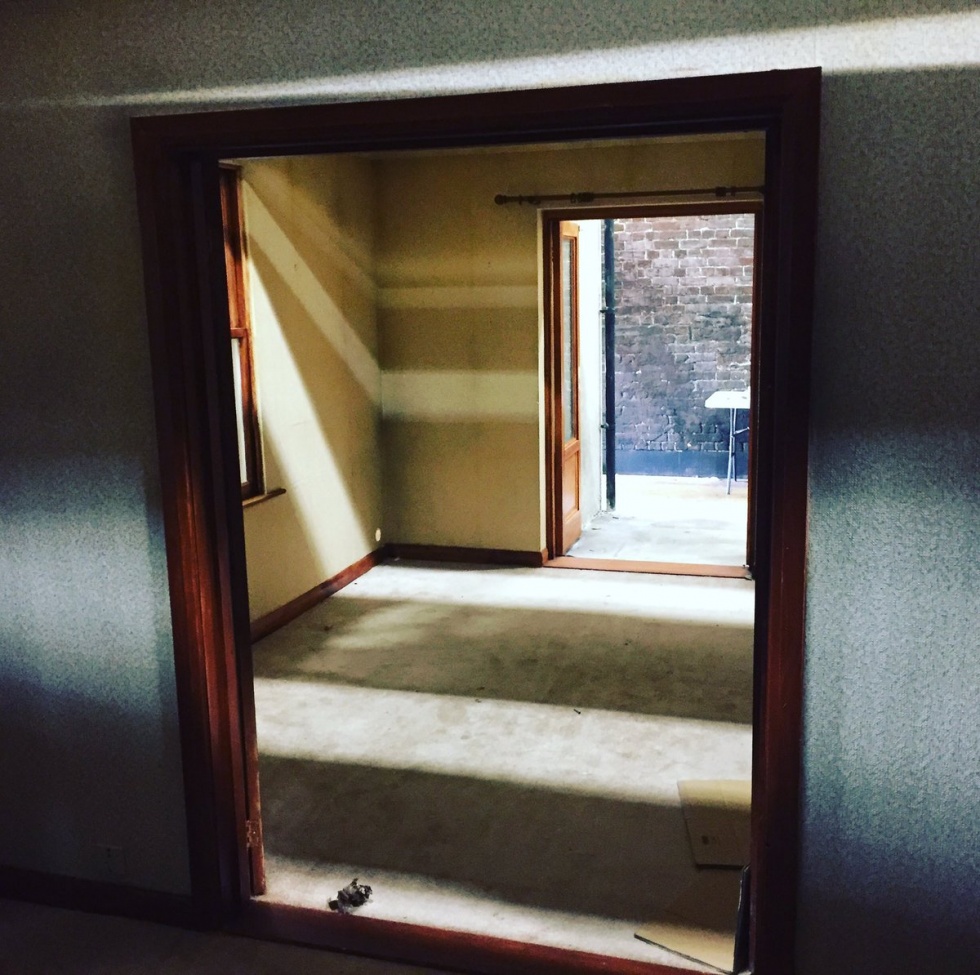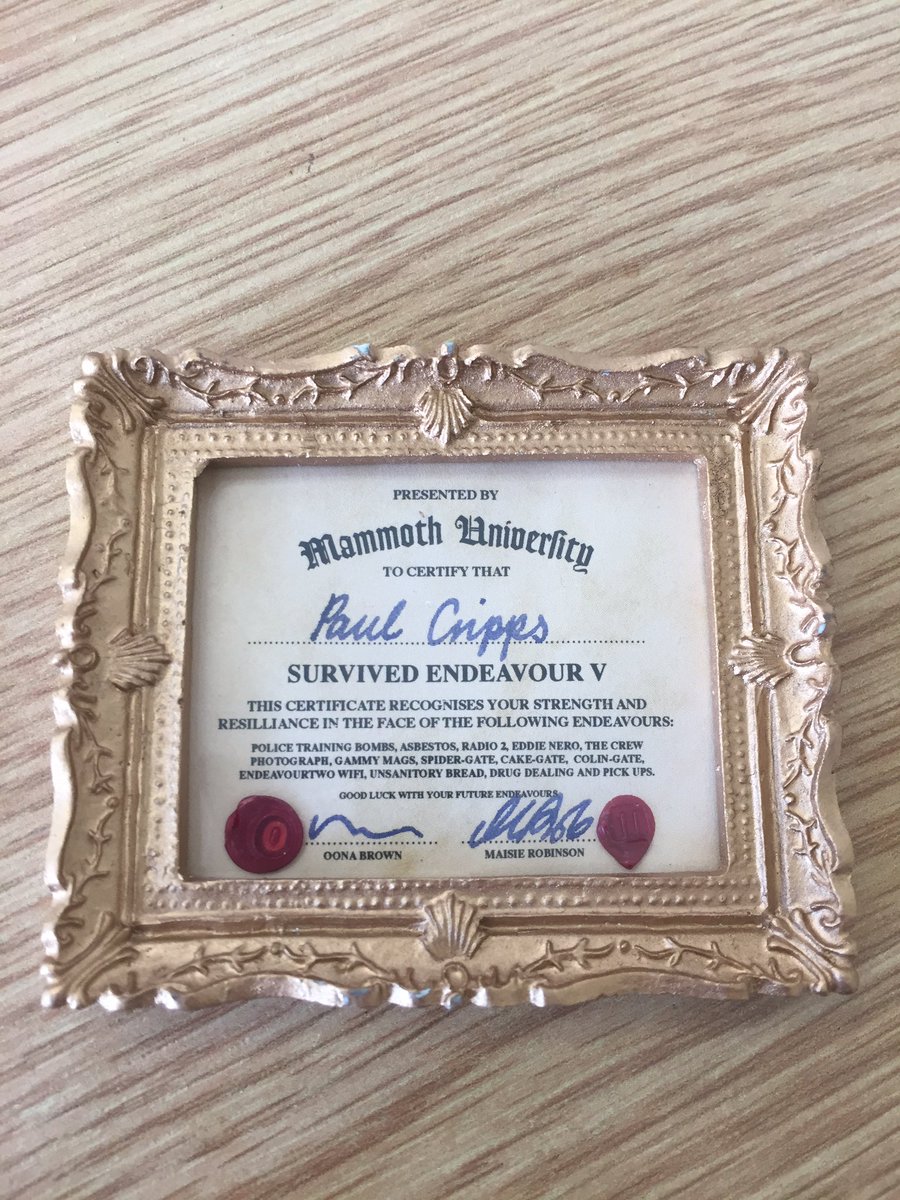An exclusive Endeavour interview with writer, producer, director, puppet operator and editor Stephen La Rivière
Interview copyright © Damian Michael Barcroft 2020
INT. MOONBASE
Consoles with winking lights. The HERO of MOON RANGERS – square jawed MAJOR.ROCK RENTON with X1 the ANDROID and COLONEL CRATER, crusty old patriarch.
MAJOR RENTON: If only we could access Damian Michael Barcroft’s website from outer space. I wanted to read his interview with Stephen La Rivière about the making of the ‘Moon Rangers’ sequences for ‘Endeavour’.
Some electronic beeps — X1’s ‘VOICE’.
COLONEL CRATER: What did that box of wires and lights say?
MAJOR RENTON: X1 says if we can beam our signal off the asteroid, we might be able to find Barcroft’s Uniform Resource Locator.
COLONEL CRATER: His URL? Great Scott! It’s a billion to one-shot, but it might just work!
(Not quite as originally written – apologies to Russell Lewis)
CUT TO:
DAMIAN: Okay Steve – right, let’s go! Stephen, you’re a producer, director, writer, actor and, of course, a puppeteer best known for your work relating to Gerry and Sylvia Anderson’s Supermarionation style of filmmaking. However, you were born in the eighties so must have missed most of their really iconic shows?
STEPHEN: If we’re talking original transmission, then I missed all of them. However, there was a HUGE revival in the early 90s – and, indeed, again in the early 2000s. It always surprises me that so many people have forgotten about the revivals – which were in many ways more successful than the original transmissions. The Tracy Island toy was the most sought after Christmas present for children both times. And it was quite a feat – perhaps one only really matched by the likes of Disney. Children were tuning into a show made three decades previously and accepting it as something of their time.
Having said that, I discovered the shows slightly ahead of their revival courtesy of my mother who bought a video of Thunderbirds from the bargain bin at Woolworths because she’d liked it when she was a child. And it seems to have been instant love.
DAMIAN: What shows do you remember watching as a kid that had their first broadcast in the eighties and how did they compare to favourites like Thunderbirds?
STEPHEN: On the basis of pure vanity, I’d like to point out that I’m sufficiently young enough to only have a couple of sketchy memories of the 80s as a whole! My memories of 80s shows were largely on repeat – and again they were shows like Thomas the Tank Engine that had artistic appeal that allowed them to live beyond their original audience. Thomas, incidentally, was produced by an ex-Thunderbirds model maker. Of my contemporary shows in the first half of the 90s… I watched stuff like Teenage Mutant Hero Turtles. Stuff that was entertaining enough at the time but no real longevity. I have nostalgia when I catch a glimpse of stuff like The Raggy Dolls etc. But that’s it really. Nostalgia. I wouldn’t watch these shows for enjoyment now – whereas the Gerry and Sylvia shows of the 60s are endlessly watchable.
The early 90s was a golden time to discover great shows of the past. Friday evenings on BBC 2 – Thunderbirds, Stingray, Doctor Who, The Champions, The Man From Uncle. Plus Channel 4 showed The Avengers. In 1996 ITV did a repeat run of Upstairs Downstairs. Lots of kids discovered Doctor Who during this time too – and loved it even though it was in black and white. Great television and films will never die, so long as new audiences are given a chance to see them. That’s the sad thing about Netflix algorithms – it reduces your chance of exposure to stuff you wouldn’t normally look for. Also the idea that ‘modern kids won’t like that’ is a nonsense. Children have no preconceptions at first – they’ll either enjoy something or they won’t. In many ways, they’re less set in their ways than adults. Early exposure is the key though.
DAMIAN: Can you describe your childhood, for example, were there other kids you could share your passion for sci-fi and fantasy with or were you something of an outsider?
STEPHEN: I was an outsider. In more ways than just my interests. Even at the peak of the revival I didn’t know anyone who liked the same things I did. I managed to get one friend briefly into Doctor Who – but I suspect he was as interested in Doctor Who as I was in football during the brief moment I ‘got into’ it. I.E. to have a shared interest. Also, I wasn’t really a sci-fi fan. Probably more of an old television fan. By the age of ten I was as content watching stuff like Upstairs Downstairs or I Claudius – which I believe a certain mutual friend was in – as I was anything sci-fi. My principal loves though were the Supermarionation shows and Doctor Who. My interest in Who has waned over the years, but my Supermarionation love… well. Need I say more? Anyway, the short answer is: no. I didn’t have anyone to share my interests with!
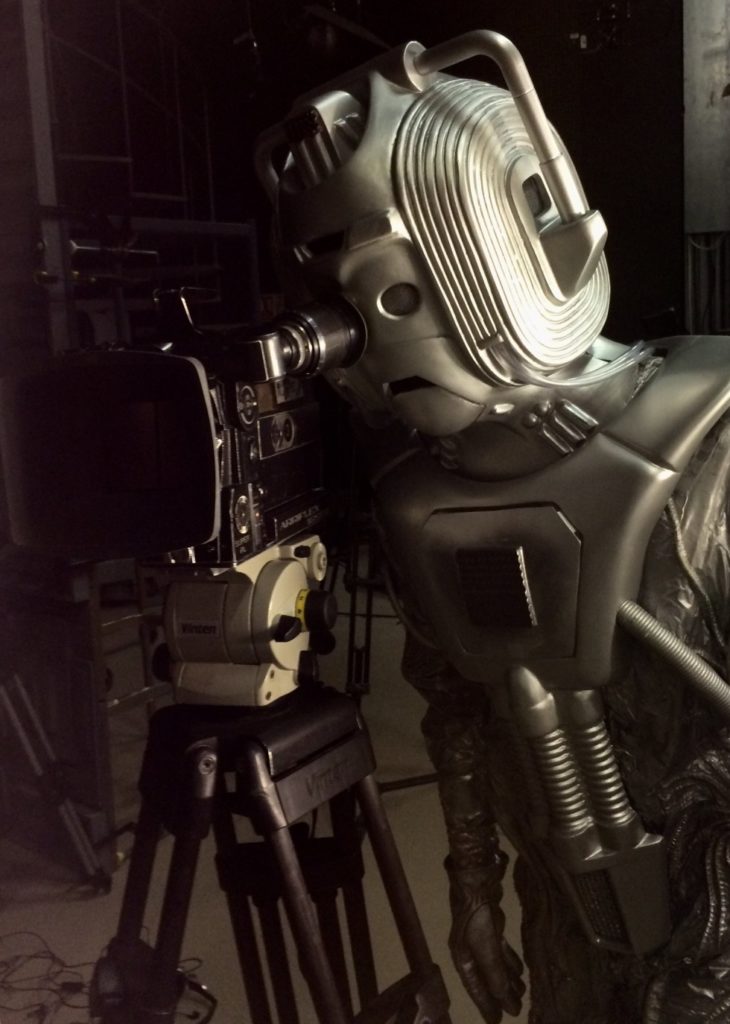
DAMIAN: Were there certain characters from any of the Anderson productions that you identified with or perhaps aspired to be like?
STEPHEN: Not really. I’ve never really looked for characters who were like me – and my family background and life has been so odd I’d be surprised if I ever saw a character I could directly identify with. Nor have I ever needed it. Television was a great way to find cool people unlike you! Did I aspire to be like a character – yes. I always wanted to be as cool as Scott Tracy. That voice! Thunderbird 1! Unfortunately, some things are out of range. I suppose if I started smoking 50 a day now I might manage to get a voice like Jeff’s.
There’s a message that underpins many of the Supermarionation shows about helping others – and I think that did leave a lasting impression. I was in Japan during the big earthquake in 2011 and I think part of my desire to stay and volunteer was partly driven by that childhood message relayed in almost everything the Andersons made.
DAMIAN: I’d like to talk a little bit about finding an audience or readership and how the internet has opened up so many opportunities. What can you tell me about your first experiences and how these led to the documentaries and books?
STEPHEN: Well, I’m guilty to an extent of piggy-backing on someone else’s audience. The background to my production life really begins with the fact that I had an awful time at school – which culminated in three kids trying to knife me. So I left when I was 15 without any qualifications. And that immediately reduces your options. The great thing though about being an outsider as a child is that it gives you lots of time to watch TV! And so whilst I lack any formal film education, by sheer osmosis I think I learnt a lot about how to make films. DVDs – and consequently DVD extras – were becoming a thing at that time. I found out that Terrahawks was being released on DVD and suggested to the releasing company that they do some interviews. Somehow that led to me making something for them – my first credit. And that led to making more behind the scenes programmes. So my audience was stolen really.

I got a bit disillusioned with production in 2008 so gave it up permanently. I wrote my book Filmed in Supermarionation the same year – and then in 2010 moved to Japan. So the last five years back in the world of film, television and advertising has been a bit of a surprise. I was tempted back on a one-off basis because I was offered the chance to turn Filmed in Supermarionation into a documentary. Which in turn has led into something of a Supermarionation revival when we produced three new episodes of Thunderbirds for the 50th anniversary of the show. And my goal with that was not just to celebrate the past but to bring a new audience to what I believe is an art-form that is both beautiful and bonkers!
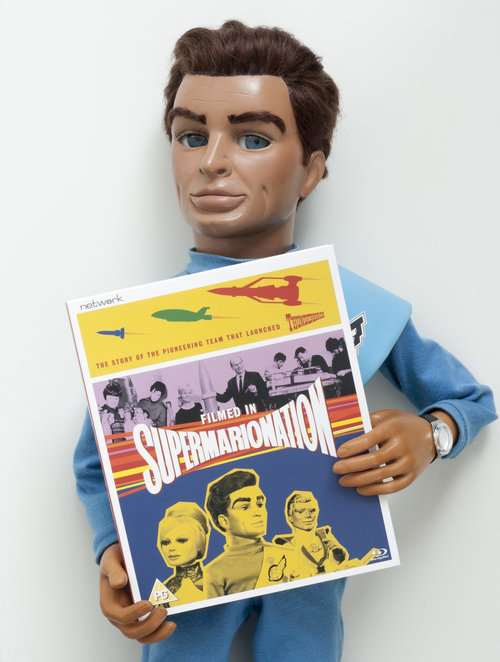
DAMIAN: In addition to the old cliché about being in the right place at the right time, to what extent would you agree that there’s usually some sort of kind mentor along the journey that helps with making contacts or offers sage advice?
STEPHEN: The self-made man is a myth. We all get through life with the help – and sometimes hindrance – of others. When I did the Terrahawks DVD extras I was out of my depth really. Kevin Davies – who designed the Terrahawks titles – was by then a documentary maker. He immediately clocked that I could do with some help. But he never humiliated me – just gave me little tips about things I could do. So I owe him a lot. And along the way there have been lots of people who have helped me. Including some who I met because I wanted to interview them. Thunderbirds director David Elliott, playwright Rosemary Anne Sisson, actress Jean Marsh, composer Alexander Faris – people I went to meet once, who then helped me in immeasurable ways. Like everyone else I’d like to believe that I’m completely in control, but I think the most you can hope for in life is to be the captain of a boat in stormy seas. You push in certain directions, but the tempestuous waves of a million different factors – people, circumstances, chemicals in your brain – earthquakes! – take you to places you wouldn’t normally end up.
DAMIAN: Well, Russell Lewis, being a huge fan of the Anderson productions himself, greatly admired your work and told me that he pointed the Endeavour team to you. How did you first hear the news that they wanted you to film the Moon Rangers sequences and what was your reaction?
STEPHEN: I got an e-mail one day from the producer, Deanne Cunningham. ‘I’m the producer of an ITV drama. I am trying to contact Stephen La Rivière about an episode we are currently planning involving supermarionation style puppetry. It would be great to speak to you about this if you have the time.’
I can’t imagine not having the time for something like this!
It was very exciting. The life of a freelancer is so often waiting for the e-mail or letter that will start a new adventure. A couple of days passed before I found out what it was about – during which time I’d resigned myself to the fact that maybe someone else had got the job. Not that we have any competitors as such as it’s such a specialised field, but the thought is always there.
When I found out and read the script I was very excited, but also worried. Linking up with another crew can produce problems. We worked on an advert for the Halifax in 2016 and I made the error of allowing them to choose the crew who would work under our advice. The crew were perfectly accomplished – but they’d never made anything like this before. The original Supermarionation crew were very clever. And it’s very difficult to film these puppets and models if you don’t know all the tricks that were used by the original Century 21 Films team. The Halifax crew – not used to practical miniature work – couldn’t understand why they weren’t getting the right results with their usual techniques and consequently it was a very stressful experience. So I was worried about a repeat of that experience.
And so as to rob this story of any tension and drama – Endeavour was the best experience possible. Just wonderful people to work with.
DAMIAN: So, you’ve got the job. Can you take me through the process of how you prepared the Moon Rangers sequences including the design of the characters, their costumes, sets and vehicles?
STEPHEN: We all met in London for an initial meeting and discussed ideas and approaches. I think to begin with both sides preferred to have greater control – which is completely natural. Production is difficult, stressful and costly and you want to get people you can rely on. So naturally they favoured as many of their own crew and I favoured as many of mine. What we ended up with though was a collaboration that – I think – worked out perfectly. My initial preference was that we should build the main set as the scale is really important, but understandably Paul Cripps [production designer] wanted to do that. And taking on board our advice I think he came up with something fantastic. It looks great on camera, whilst having the right sort of aesthetic.
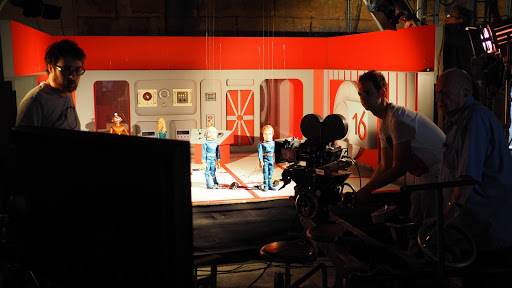
On the flip side, Paul originally planned to do the puppets, but it made more sense for us to build them as our puppet makers are the experts in this particular style of marionette and we wanted to ensure everything worked as we needed. Though, having said that, we still managed to have a mechanical malfunction on the day that nearly drove me to a nervous breakdown. Which is something else I’d like to praise the Endeavour team for. I warned them that these puppets are very temperamental and reshoot time would be essential if needed. All of that was taken into consideration – which makes the whole experience so much easier.
So Paul designed the main puppet set – which matched aesthetically what I really wanted to go for. Even though the episode was set in 1969, I felt that Russell has perfectly caught in the dialogue the essence of Fireball XL5 and Stingray – which had that sort of weird late 50s / early 60s hybrid look.
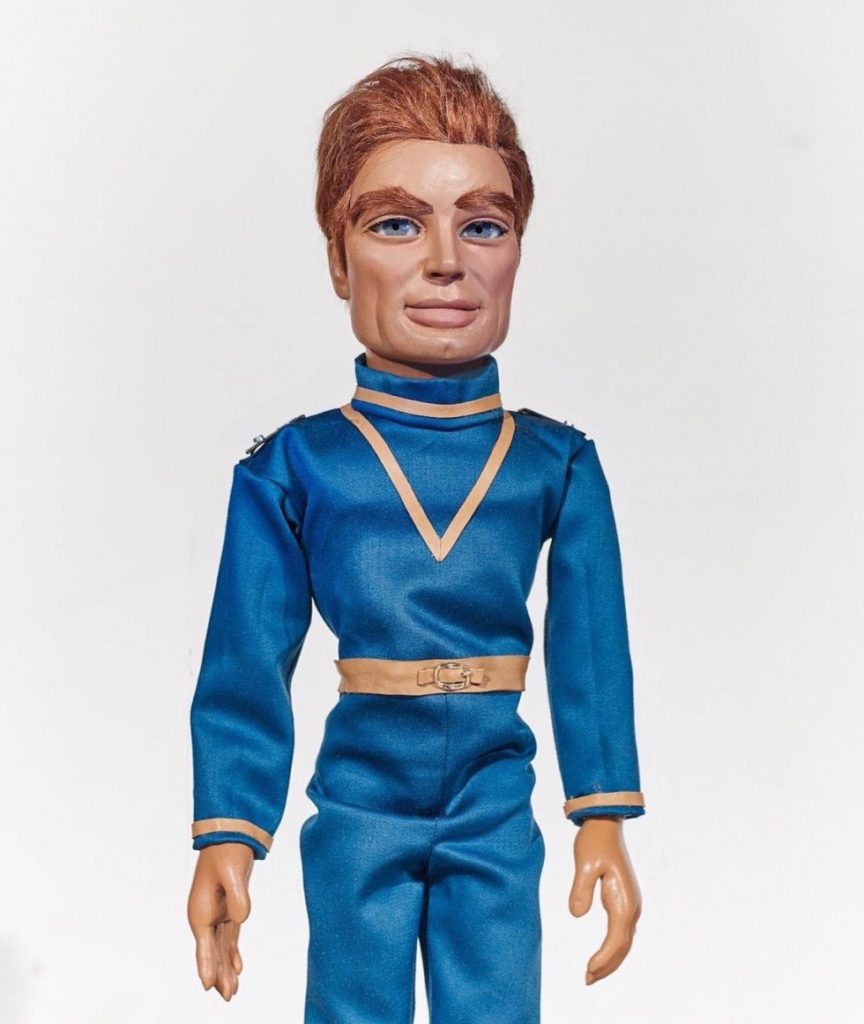

Paul also gave us sketches as to how he envisaged the characters. Rock Renton was made specially for the show by top sculptor Stephen Mansfield who sculpts all our new characters. Stephen took Paul’s design as a starting point and then translated that into the pre-set proportions of a Supermarionation puppet whilst adding a few influences from the original characters. I was really happy with the look of Rock Renton – he seemed to embody Steve Zodiac, Troy Tempest and Scott Tracy somehow. Once the sculpt was done and approved puppet maker Barry Davies built the puppet and installed all the mechanisms.
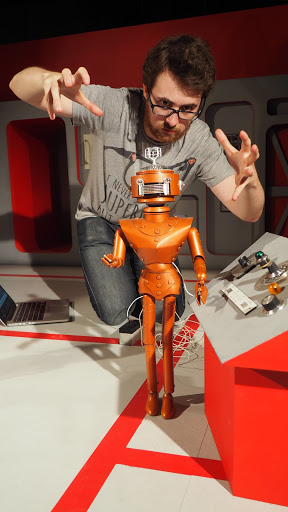
The X1 Robot was again built following Paul’s initial design – but with slight changes that occurred as a result of using ordinary household objects. The head, for instance, is a paint pot! He was built by our effects team of Toby Chamberlain and Hilton Fitzsimmons and operated by Elliot Pavelin.
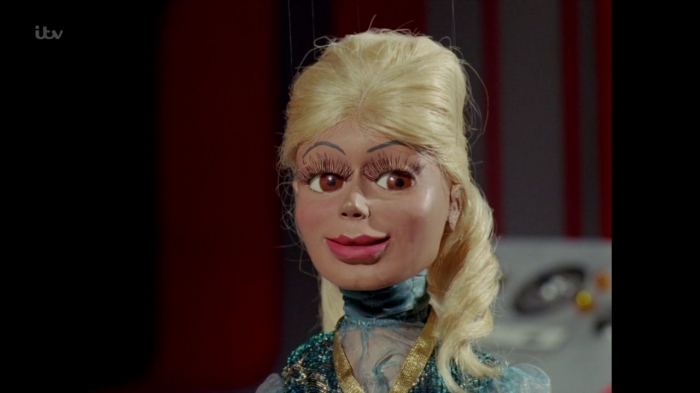
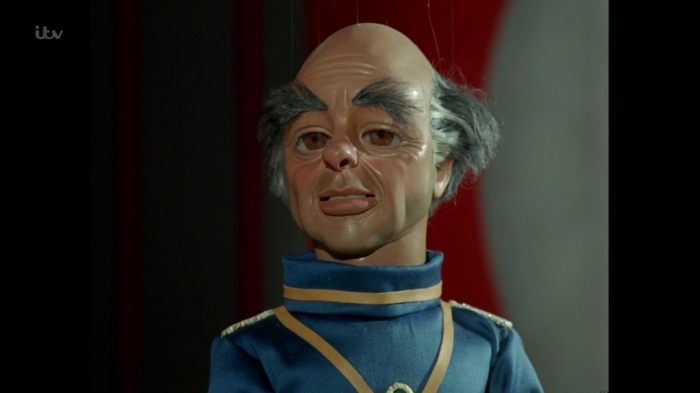
Luna and Colonel Crater followed Paul’s ideas more by chance than design in that we already had puppets that looked right. Paul wanted Colonel Crater to look like Morse creator Colin Dexter. We agreed that an existing puppet – who we’d had built for the new Thunderbirds episodes we’d made in 2015 – again sculpted by Stephen Mansfield – looked the part. Because of the pre-determined proportions of the earlier Supermarionation puppets, you can never really do an exact copy – so you aim to capture the essence. And the puppet previously known as Dawkins seemed just right for the job.
Luna was a previously unused puppet – sculpted for (and deleted from) the Halifax advert by Marina and Lady Penelope creator Mary Turner. Given Luna is an homage to Marina it seemed almost serendipitous that we could provide a puppet sculpted by the same person.
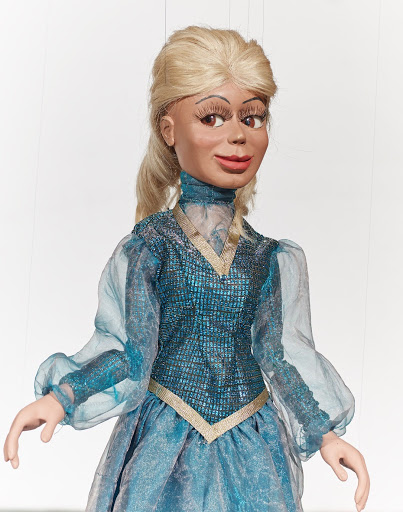
Paul also included some costume sketches. The costumes were made by our costume lady, Liz Comstock-Smith. She followed Paul’s design for the main uniform, whilst the final look of Luna was influenced by some rather fabulous flowing fabric Liz found. Supermarionation is a very organic process – whatever you set out to do morphs across the different elements of production. Not just because of the creative whims of the team – but because the puppets are so specific in what they require. In the case of the costumes, the fabric and construction has to be perfect to allow the puppet to move freely.
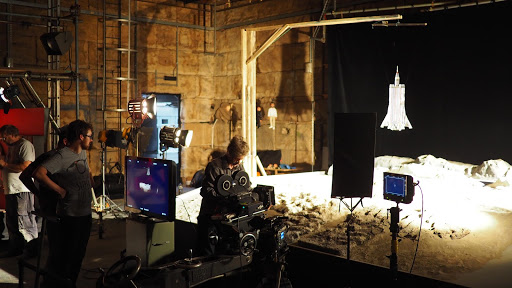
On the special effects front, the rocket was kit-bashed by Hilton Fitzsimmons who built two models – just in case we needed to blow up two. Paul arranged the staging and drapes needed for the SFX shots – and had some rather nice moon craters built. The stage was dressed with sand for the drama shots – but we substituted that for other materials when it came to the effects shot itself for a better effect.
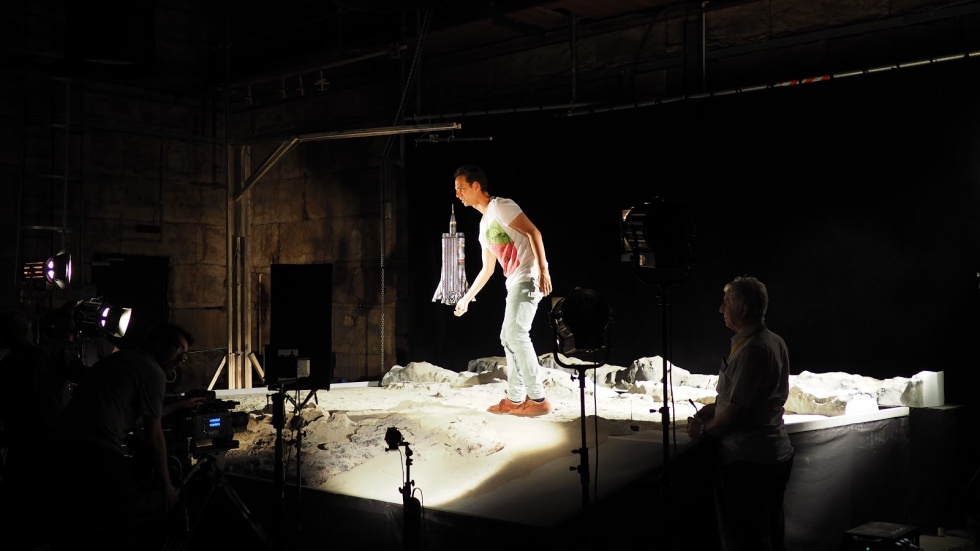
We were on set for a week in total. The drama sequences were shot on the Wednesday and Thursday – and then we took over the stage to shoot Moon Rangers. Both puppet and model sequences were shot on a vintage Mitchell on 35mm film by Boyd Skinner our expert DOP who knows all of the lighting and lensing requirements. Malcolm Smith came into do the pyrotechnics (which were very loud). Again, Malcolm is an expert in producing the right sort of explosions that work in miniature. He also has to plan out the timing of each shot precisely because we shoot at high speed. So a 5 second detonation is in fact only 1 second in real life.
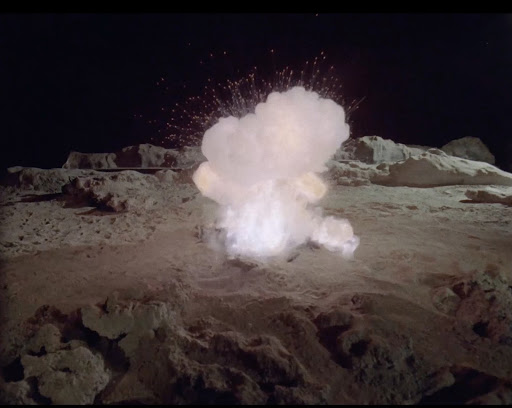
The model shots were done in sections. The landing and initial detonation, the collapse, and then various shots of detonation – which had to culminated in the foam of the extinguisher in order to take us back into the main drama. I was very conscious that we were an elaborate, but small part of a big drama and tried to make sure as much as possible that our bits would integrate into the main action.

I can’t stress enough how much of a genuine collaborative effort this was. We were all in constant touch checking with each other that we were getting what we wanted. From my side, I wanted to be providing the show with what its production team wanted. From their side, they were respectful of making sure that I got the things I needed to make sure we ended up with an authentic looking, affectionate homage – not a badly made parody that cheapened the original shows.
I hope that what we ended up with is a true marriage between Russell’s written vision, Shaun’s directorial vision, Paul’s design vision and my vision of how to do new Supermarionation work that doesn’t harm the original shows, but brings a new audience. And given the reaction online – I think we succeeded. In the year since Apollo went out, we’ve been inundated with requests not just to bring Thunderbirds back, but to do full series of Moon Rangers!
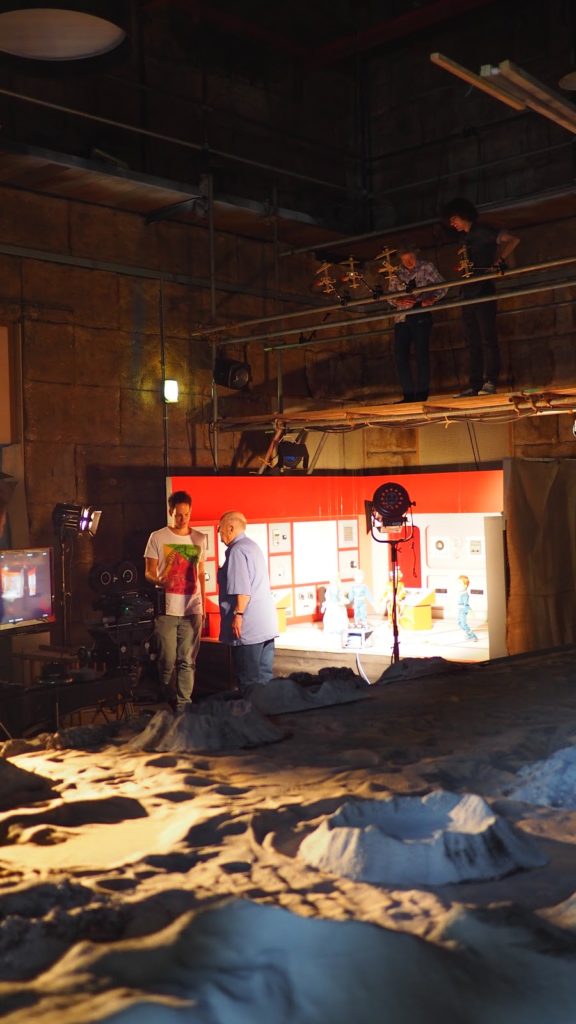
DAMIAN: How did puppeteer Mary Turner and director David Elliott who both worked on the original Thunderbirds become involved?
STEPHEN: I’ve known Mary and David for the best part of 20 years – I first met them as a young fan wanting to know how the shows were made. Going to Mary for puppeteering seemed natural – not just because she was there, but because she understands television puppeteering. It needs to be subtle as the camera amplifies everything. She was joined by Géraldine Donaldson as the supervisor (she ensures that all the puppets are prepared, dressed, styled and working) and Elliot Pavelin – who worked as a lip-sync operator and puppeteer. Although to be honest we all do a bit of everything really. My co-producer Andrew T. Smith not only looks after the running of the whole operation, but puppeteers, lip-sync operates, sorts out camera problems. We all have to be all rounders!
As for David when we began production on the three anniversary specials of Thunderbirds, he asked if he could direct one. It hadn’t occurred me to ask because it’s a huge strain and he was 84. I hesitantly agreed and… he sat down in the chair and five decades fell away. It was like he’d never been away. He did some amazing work for us.
For Endeavour, I wanted to puppeteer too, and so it made sense to have David on set too. Originally it was to have a second pair of eyes focussed just on the action to make sure we were getting everything – but he’s so full of good ideas it can’t help but be a collaboration. So even though I got sole credit, it was actually both of us – some shots are his, some are mine. One of the shots was actually the idea of my co-producer, Andrew T. Smith. It really is a very collaborative process. If someone’s got a good idea we use it!
It wasn’t just David and Mary – David Graham, the voice of Parker, provided (uncredited) the voice of Colonel Crater. Mary and David Elliott are in their 80s, and David Graham is in his 90s – so I think I might have the oldest working film crew out there!
The dialogue was recorded at Hackenbacker in London. Nigel Heath gave us a fantastic 60s microphone set-up so we could get the authentic sound. Justin T. Lee provided – again uncredited – the Scott Tracy-esque voice of Rock Renton.
DAMIAN: What was Shaun Evans like to work with as an actor and a director?
STEPHEN: As I said earlier on, one of my great concerns about this was having a repeat of the Halifax experience – trying to work through another director. But Shaun said that I should direct the Moon Rangers bit as it was a specialised form of filmmaking. So my level of respect for him is huge. Not every filmmaker has the lack of ego to be able to say, ‘Actually, it would be better if we let this person do this bit’.
That’s not to say Shaun had no involvement – everything done was to service his show. But ultimately, this was one long special effects sequence involving specialised knowledge and it was fantastic that we were allowed to get on and do the things we needed to do.
A specialised sequence like this – in the middle of a big production with its down demands – could have been a nightmare to get right. But it was just a pleasure. Nearly two years on, I’m still surprised to be able to say that as it’s so unusual!
DAMIAN: Who gave the best performance – the puppets or the human actors?
STEPHEN: Given that Rock Renton broke down – mechanically, rather than mentally – for three hours on the shoot day, I’d say the actors. Definitely more reliable. Though, like many temperamental stars, I don’t think any of Rock’s problems showed up on screen.
I would like to highlight one puppet performance though that I loved – Colonel Crater collapsing. Mary Turner operated Crater and her comic timing reduced everyone to fits of laughter. Which on a stressful, complicated day is something we all needed!
DAMIAN: Russ visited the studios at Twickenham for two days and said that they were amongst the happiest he’s ever spent on the show. However, from your perspective, I wonder if having the writer there watching you perform was a little nerve-racking?
STEPHEN: I think many creatives suffer from Impostor Syndrome. The idea that you shouldn’t be there. So on that basis, I like keeping everyone away so I have time to fix the problems before anyone notices. And boy – do the puppets come with lots of problems. Paul Cripps suddenly wandered onto the set unexpectedly when we were having problems with Renton – and I wanted to die from shame. I mean, I know the puppets come with these problems – they either work beautifully, or they’re bastards. Even Gerry used to call them ‘little bastards’. But it worries me that to people who don’t do this on a daily basis that they think it’s incompetence, rather than the nature of this type of fiddly filmmaking.
I was delighted Russell could come down. Not least so I could express my admiration for the script which I think is genuinely very clever. In one minute it totally distills the essence of those shows. And it’s enormously quotable. Amongst my crew it’s easily the production we reference the most.
DAMIAN: You know, I think Russ actually found the experience very moving and not just because he’s a fan of Stingray, Thunderbirds and the other Anderson shows, but he told me that watching you work reminded him of when he was a kid making 8mm stop-motion films with Action Men. Essentially, as an artist, would you agree that you’re not only operating the puppets, but also gently holding people’s childhoods in your hands?
STEPHEN: Yes! Absolutely. And I’m very conscious of that in everything we do. We’re playing in a toy-box that deserves respect. My only intention with everything we do is that we tell the audience – new and old – that these shows were fantastic. Of everything we’ve done, I think Moon Rangers has done the most to promote that idea. We have big plans for Supermarionation – and Moon Rangers has really helped us on that path.

DAMIAN: Was it your idea for Russ to have the little cameo?
STEPHEN: Actually, I think it was Géraldine’s idea – our puppetry supervisor. The hand insert wasn’t in the script – but the script made quite a bit about the human sized props. So I thought it’d be fun to do a human hand sequence not least because everyone remembers them. But also, it would serve the main drama plot. As we were preparing for the shot Géraldine said, ‘Wouldn’t it be a nice idea to give Russ a cameo?’ So she went away and made a sleeve for him out of a bit of the remaining puppet costume material and he came onto the set to play Rock Renton. It’s a lovely touch. We were also able to film a bit of Russell on set with the puppets as we were at the end of the reel – hopefully a nice memento for him of the day.
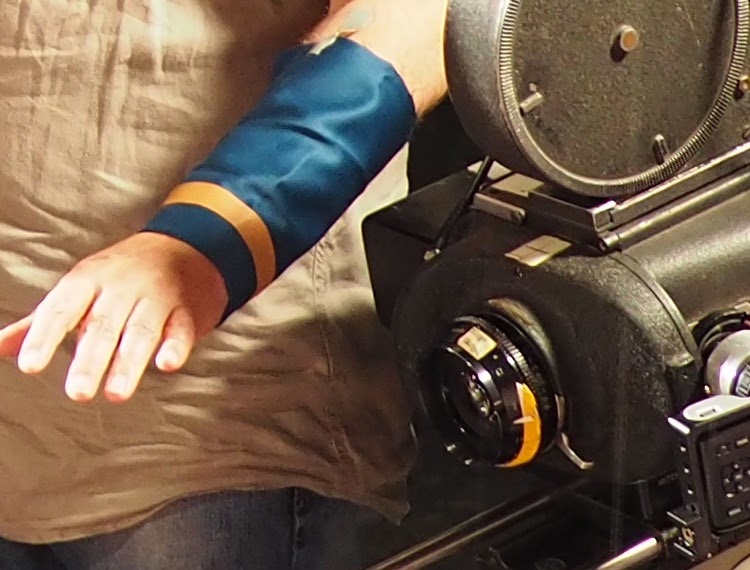

Thinking about that day I feel so warm towards the experience. That’s the magic of these puppets – despite the frustrations of production – there is just a magic of stepping onto those sets and seeing the characters live.
DAMIAN: What’s next for you and Century 21?
STEPHEN: Stand by for action… We’ll be back. We just can’t say anything about it yet!
DAMIAN: Stephen, thank you very much indeed.
STEPHEN: No, thank you. I’m not blind to the fact we were 1 minute of a much-loved series. But as I’ve said to everyone else until their eyes glaze over, I loved the whole thing. Normally old work makes you wince – but I’m hugely proud of my tiny part in Endeavour.
Interview copyright © Damian Michael Barcroft 2020
Stay up to date with all my latest Endeavour cast and crew interviews via twitter @MrDMBarcroft
